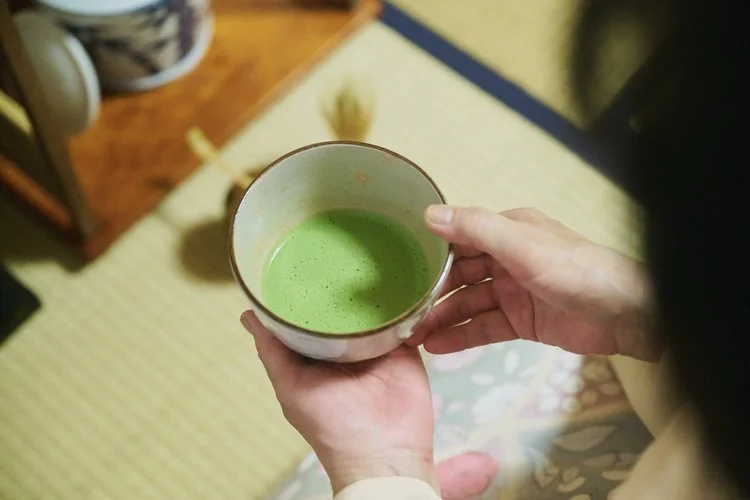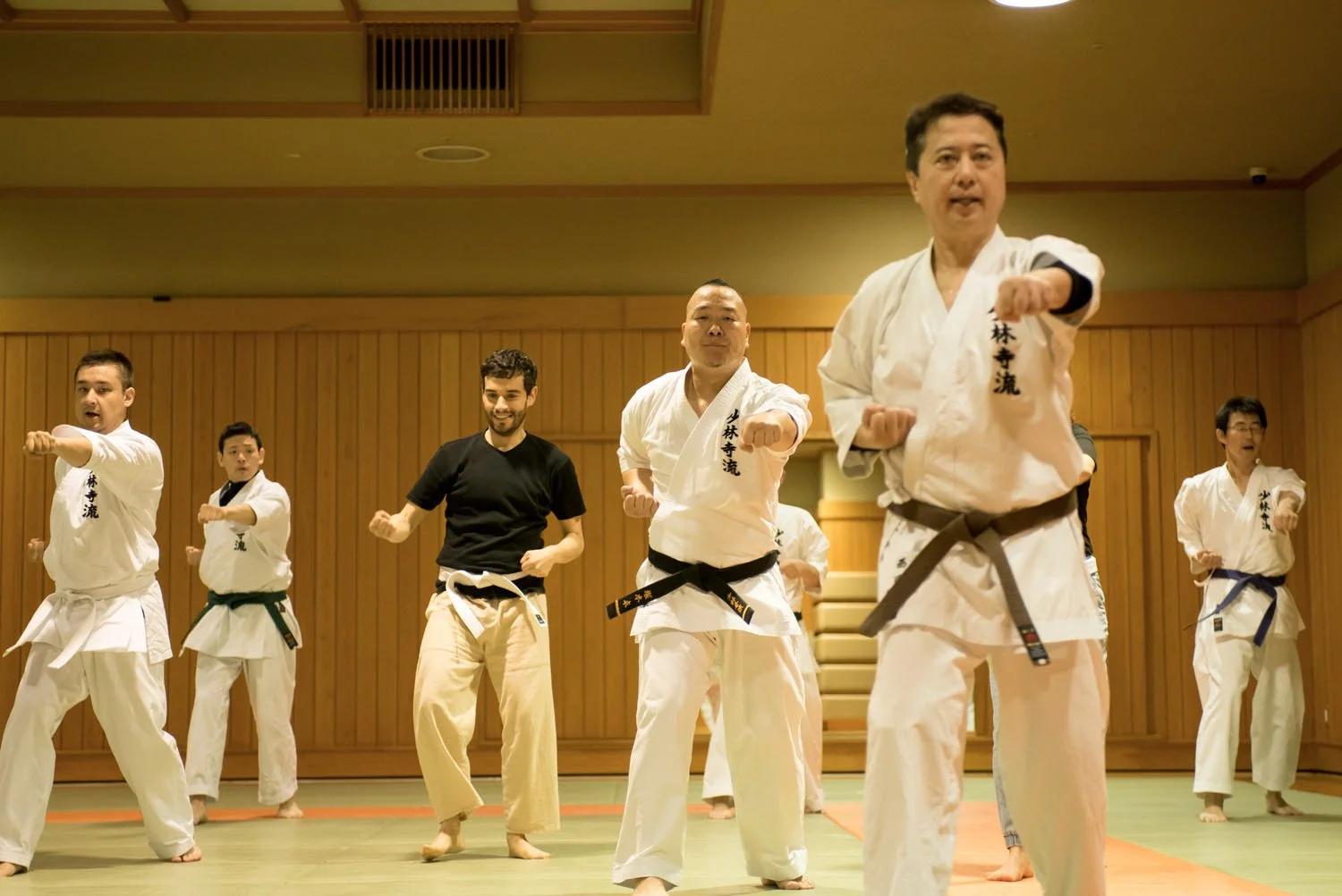
The History of Japanese Tea Ceremony
Learn about the history of the Japanese tea ceremony, from its meditative origins to modern practice.
In this Guide:
Japanese tea, from medicine to meditative art
The origins of tea in Japan
Sen no Rikyu and the start of tea ceremony in Japan
Tea ceremony and Japanese culture
Tea Ceremony FAQ
From Medicine to Meditative Art
Hospitality, tranquility, and calm – all contained in a single cup of tea. While tea culture is nearly synonymous with Japan in modern times, with bright-green matcha lattes a regular menu of cafes and images of sunny, sprawling tea fields featured in travel magazines, diving deep into Japan’s best destinations, Japan’s history of tea actually began as an import from China.
However, in the countless centuries since the 9th century, when monks first transported tea back with them to Japan’s shores, tea culture in Japan has developed into a rich range of unique customs.
One of Japan’s most iconic tea-based traditions is tea ceremony. Known as sado, or, the way of tea, in Japanese, tea ceremony evolved from humble medicinal origins into one of Japan's most refined artistic and spiritual practices.
But how exactly did the elegant art of tea ceremony start in Japan, coming from these humble origins?
The origins of tea in Japan
Tea first arrived in Japan as a medicine in the 8th century. Brought by Buddhist monks, most famously the monk Eichu, returning from studies in China, tea was consumed exclusively in Buddhist temples. There, it was used as an aid in meditation, helping monks to stay alert during sessions.
It is also said that during this time, Eichu first prepared sencha tea for the then-Emperor Saga, who was so impressed by the drink that he commanded for tea fields to be constructed surrounding Kyoto, in areas such as Uji or Shigaraki, which still remain renowned for their tea more than a millennium later.
It wasn't until the 12th century that powdered green tea, or matcha, was introduced to Japanese society. The founder of the Japanese Rinzai Zen Buddhist sect, Eisai, began to infuse the vibrant tea powder in religious ceremonies, with popularity spreading to aristocrats and members of the upper echelon as well. The 13th and 14th centuries featured lavish tea-tasting parties held by the Japanese aristocracy, called tocha, where attendees would put their palette to the test in tasting and identifying different types of tea.
But the strongest tie nonetheless remained linked to Zen Buddhism, refined to a further extent in the 14th and 15th centuries, with monks incorporating tea preparation and the simplicity of everyday actions into their spiritual practices.
Sen no Rikyu and The Start of Tea Ceremony in Japan
A formative figure in tea ceremony, Sen no Rikyu created the foundation of tea ceremony that would continue on to influence even modern culture.
No history of tea ceremony is complete without mentioning Sen no Rikyu. The founder of the modern form of tea ceremony still actively practiced in Japan today, Rikyu refined the hospitality and aesthetics behind sharing tea into an art during the 16th century.
Rikyu named four core principles that act as the foundation for tea ceremony:
harmony (wa)
respect (kei)
purity (sei)
tranquility (jaku)
With Sen no Rikyu’s influence, tea rooms transitioned to more intimate spaces and prioritized the utilization of locally crafted ceramics. It was also during this period of tea ceremony history that philosophies like wabi-sabi (beauty in imperfection) and ichi-go ichi-e (one time, one meeting) began to be conceptualized. This shift transformed tea ceremony into a ritual aimed at crafting a moment of pure hospitality, singular and wholly unique.
Now, when crafting the artful ambiance necessary to conduct tea ceremonies, other Japanese arts became infused: architecture, gardening, ceramics, and flower arrangement.
As Japan transitioned into the Edo Period (1603-1867 CE), an era marked by stability following centuries of violent warfare and the increased ability for people from expanded social classes to enjoy arts and pop culture, tea ceremony spread – first, beyond aristocrats and samurai to the wealthy merchant class, and later, to the general public too.
This freedom to participate cemented tea ceremony as a fundamental base of Japanese culture, able to be enjoyed by all.
Tea ceremony and Japanese Culture
The history of tea ceremony in Japan began as a simple act of drinking tea, and yet, succinctly evolved into a comprehensive art form embodying core Japanese cultural values.
Far more than a mere stimulant, tea in Japan retained ties to religion, aristocratic entertainment, and even samurai peace discussions. Today, tea ceremony continues to serve as a path to mindfulness and as a way to create a space where visitors can be welcomed into a moment of resplendent calm.
Embrace centuries of cultural history, contained in a single cup of tea, by attending a tea ceremony in Japan. Learn the rituals of this ancient art from verified tea masters and immerse deeper into how the history of tea ceremony is kept alive.
Sip by sip, brew by brew.
Tea ceremony FAQs
-
Each school of tea ceremony will have its own etiquette and expectations to follow. However, generally, avoiding wearing fragrances, removing rings or jewelry that might damage the priceless tea cups, and wearing socks to the tea room is recommended.
-
Tea ceremony is known by many names in Japanese: sado, chado, and also, chanoyu.
-
While traditionally, tea ceremony participants are expected to sit in seiza, many tea ceremony hosts offer accommodations to guests who find the seiza position uncomfortable.
-
Koicha (thick tea) and usucha (thin tea) are both made from matcha - all that differs is the thickness. Koicha is far more concentrated and, therefore, is reserved from often for formal tea ceremonies, while usucha can be more commonly enjoyed as a daily drink.






